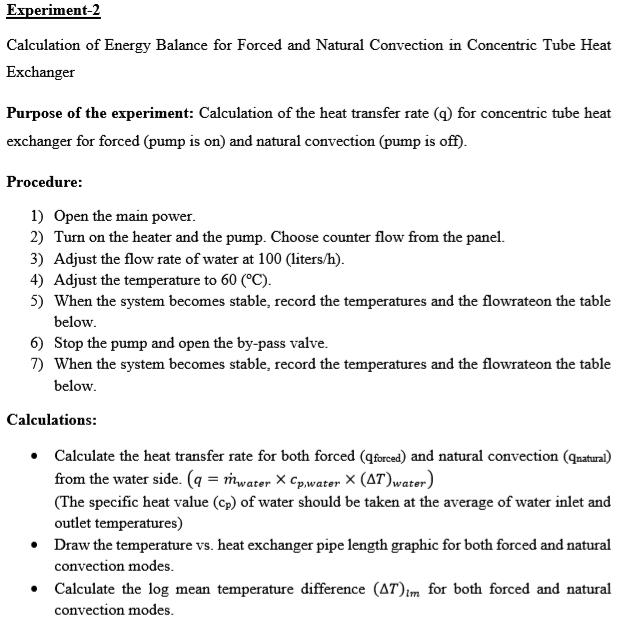Answered step by step
Verified Expert Solution
Question
1 Approved Answer
What is the purpose, results and conclusion of this experiment? Experiment-2 Calculation of Energy Balance for Forced and Natural Convection in Concentric Tube Heat Exchanger

What is the purpose, results and conclusion of this experiment?
Experiment-2 Calculation of Energy Balance for Forced and Natural Convection in Concentric Tube Heat Exchanger Purpose of the experiment: Calculation of the heat transfer rate (q) for concentric tube heat exchanger for forced (pump is on) and natural convection (pump is off). Procedure: 1) Open the main power. 2) Turn on the heater and the pump. Choose counter flow from the panel. 3) Adjust the flow rate of water at 100 (liters/h). 4) Adjust the temperature to 60 (C). 5) When the system becomes stable, record the temperatures and the flowrateon the table below. 6) Stop the pump and open the by-pass valve. 7) When the system becomes stable, record the temperatures and the flowrateon the table below. Calculations: Calculate the heat transfer rate for both forced (qforced) and natural convection (qatural) from the water side. (mwater X Cpwater (AT)water) (The specific heat value (cp) of water should be taken at the average of water inlet and outlet temperatures) Draw the temperature vs. heat exchanger pipe length graphic for both forced and natural convection modes. Calculate the log mean temperature difference (AT)im for both forced and natural convection modes.
Step by Step Solution
★★★★★
3.34 Rating (154 Votes )
There are 3 Steps involved in it
Step: 1

Get Instant Access to Expert-Tailored Solutions
See step-by-step solutions with expert insights and AI powered tools for academic success
Step: 2

Step: 3

Ace Your Homework with AI
Get the answers you need in no time with our AI-driven, step-by-step assistance
Get Started


